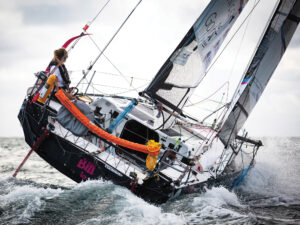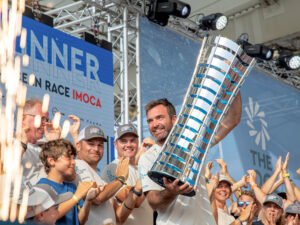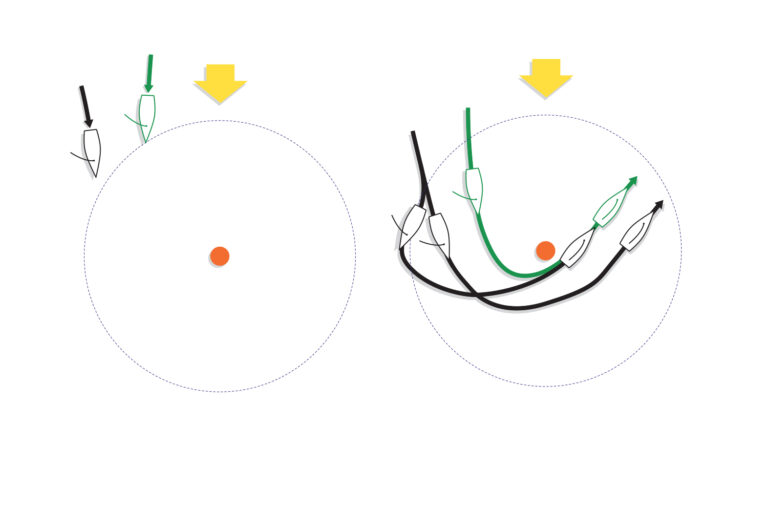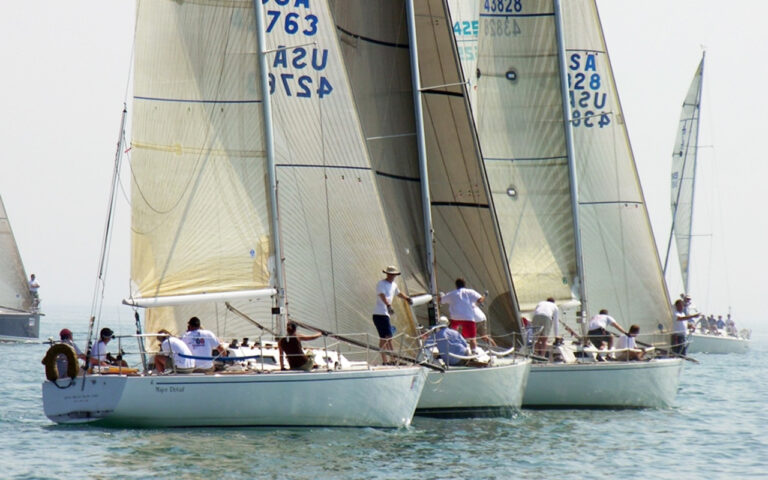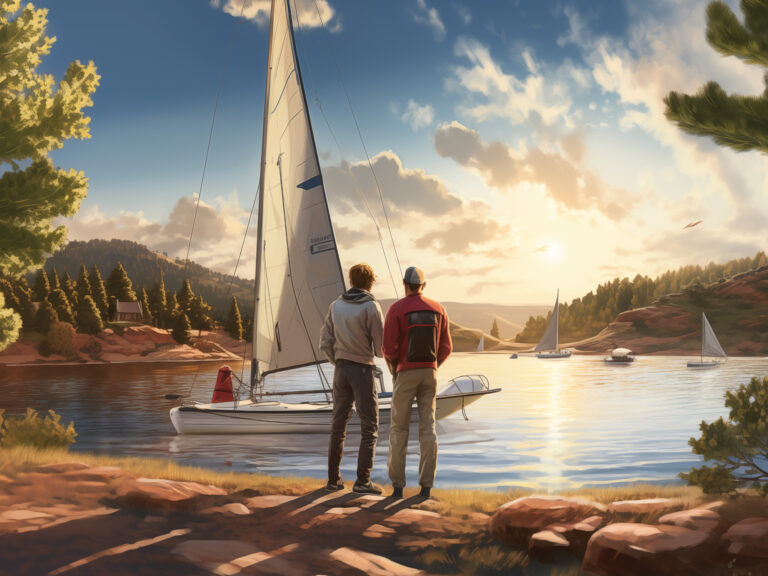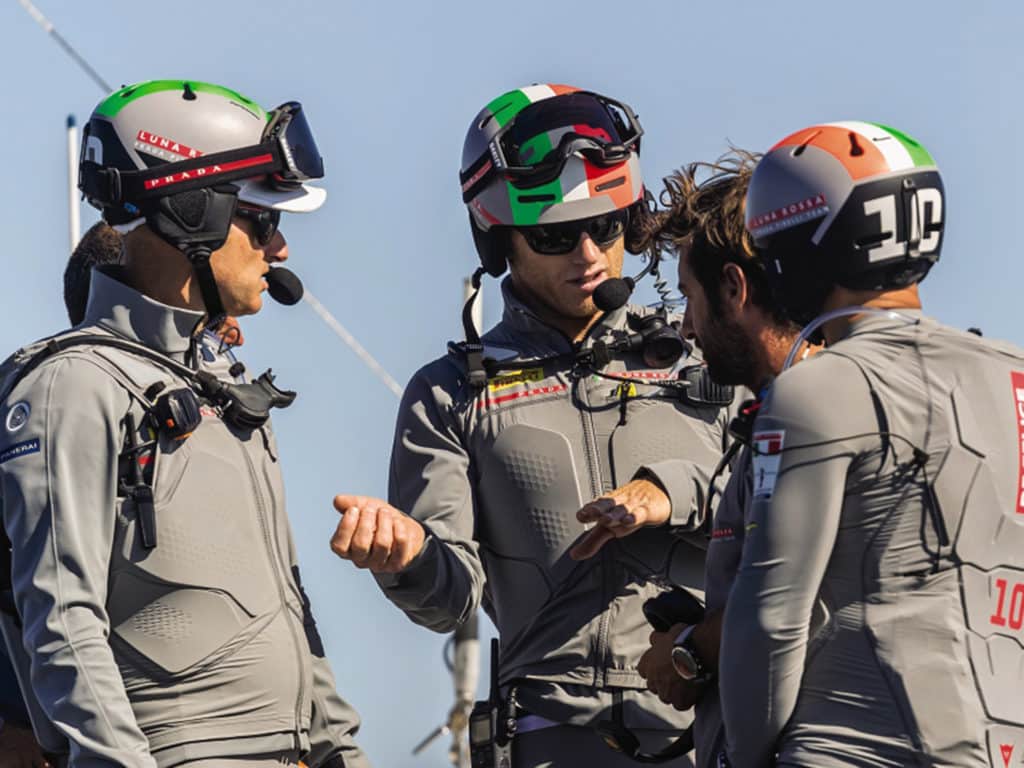
The wind is howling through Luna Rossa Prada Pirelli Team’s base in Cagliari, Italy, in mid-January. There will be no sailing today, but they’ve already had plenty of whitecap sessions, validating their sleek, black 75-footer all the way to the top of what is yet to be determined as the raceable wind range for America’s Cup in Auckland, New Zealand, in 2021. “We’ve been pushing pretty hard,” Luna Rossa helmsman Jimmy Spithill says. “Most days, we’re off the dock at 7:30.” A few weeks later, a rigging failure resulted in the team’s entire rig timbering over the front of the boat. It’s a new boat—it happens. Better now than later. “We have to take everything to maximum loads,” Spithill says. “The rig, the foils and the hardware—all that takes time. Some things go well; some things need development.”
For Spithill and the Italian Challenger of Record, break-in of their first of two AC75s has ratcheted ever higher since the beginning of the year. In a few months, they’ll host the first of three America’s Cup World Series events, providing themselves, two other challengers and the defender, Emirates Team New Zealand, a taste of what’s to come in Auckland.
All four teams—Luna Rossa, Ineos Team UK, American Magic and Team New Zealand—have each put significant hours into their boats, their bodies and their simulators, and Spithill says he’s happy with the team’s progress. But these are early days yet, and they’re only just coming to grips with their flying beast.
Still, no sailing doesn’t mean a day off. The simulator is calling. The simulator, one of which every team has, is a game-changer for this Cup cycle, Spithill says. Emirates Team New Zealand was the only syndicate to employ one in the previous Cup, and several Team New Zealand engineers involved with its development are now in the Italian camp. “We can go through a lot of the sailing data and that sort of thing with it,” Spithill says. “Whether we’re down because we’re doing a modification to the boat or because of the weather, we can keep going, to test the software out or try different appendages and setups. The most powerful thing with the simulator is the ability to get results much quicker than in the past and make sure the behavior of the boat in the simulator is as close to replicating what’s actually happening on the water when we’re sailing.”
There’s a tremendous efficiency to the simulator as well. He says: “In the past, you look at just how much time, money and effort goes into getting on the water and sailing in the America’s Cup. It’s no different this time; we need a crane, a heap of people, chase boats. It’s a huge operation, and by the time you get out there, you may get only a few hours of quality sailing. In the simulator, we go until we’re brain-dead. If you make a mistake on the water, you lose so much, but on the simulator, we can just stop and do it again, setting up different scenarios.”
He recalls the first time he walked into the team’s simulator and left feeling sick. Not because of the motions of the platform and the realness of it, but because he “realized how far behind the rest of us were by not having this tool last campaign, and instantly regretted not pushing harder to develop one then.”
Spithill—once the most visible personality of the modern Cup era—is enjoying his low-profile role with the Italian team, now able to focus strictly on sailing, while Max Sirena, the team director and skipper, is out front with sponsors and commercial partners. Even on the team’s website, Spithill, a six-time veteran of the Cup and back-to-back winner, has no official title.
“The last few campaigns, I was running the team and I enjoyed that,” he says, “but at the same time, I was involved in the commercial responsibilities and promotion for both the team and event. Max is responsible for this now, so I have more time to focus on sailing and design.”
He’s now in the afterguard with Francesco Bruni, with both sharing the driving. “It actually works pretty well because I have the ability to step off the boat and have a look. I get to see different styles and techniques, which is a great way to develop the boat and grow.”
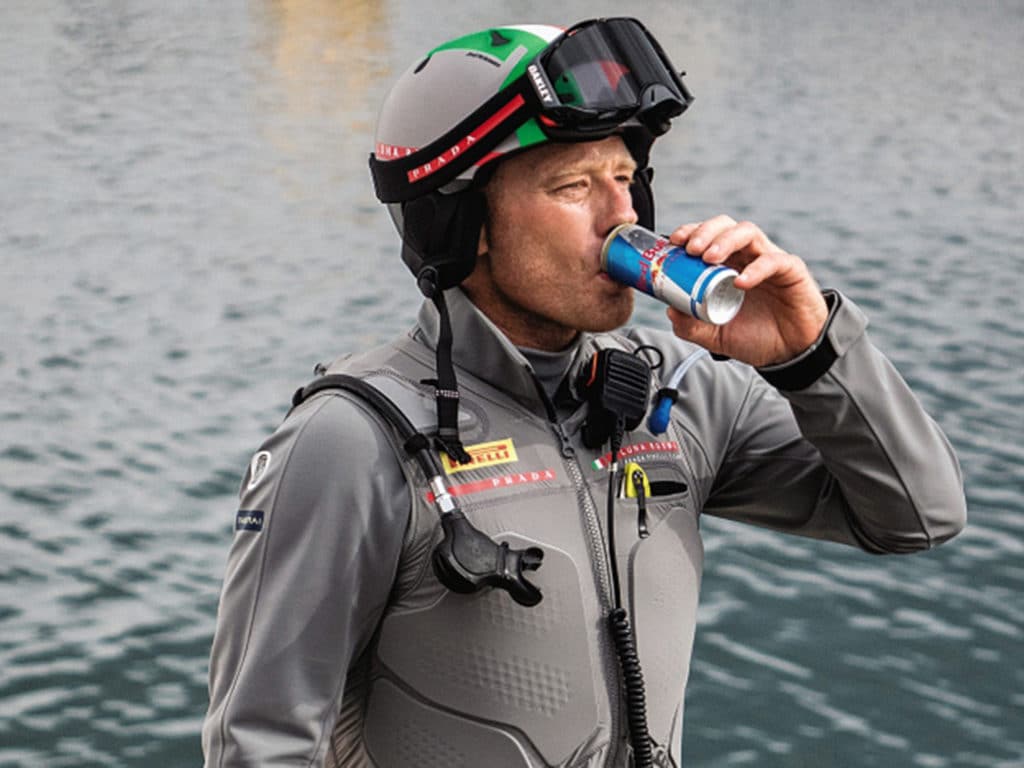
He won’t say who’s faster between the two of them at the moment, but it doesn’t matter because they’re both on the same steep curve, learning and pushing each other. “Last time, I was really running the team, and I enjoyed that, but I didn’t realize how much I really enjoy the sailing time. You can get dragged away in so many ways, so it really is nice now to really be able to focus on the sailing, especially with a boat like this because we just don’t have much time. Everything’s developing at a very fast pace.”
His simple assessment of the AC75 thus far is that it is “awesome.” At first, he says, he expected it to be like the AC50 or AC72, but it’s completely different: “When you’re moving the foil arms up and down, you’re making a significant change in righting moment, and any change in cant angle of the board that’s in the water also changes righting moment, so there are different forces. Just getting used to the heel is quite weird because we have this big force coming from the leeward foil. The touchdowns are quite different too. On a foiling cat, it’s not that big of a deal when you touch down, but a big nosedive on these boats is dramatic because it’s just one big hull, and once this happens and you stop, you don’t have a wide platform for stability, much like a Moth.”
He’s not a fan of the rigs and mainsails, but says he understands the goal of trying to produce a mainsail that has the same characteristics of a wing and being able to raise and lower on the water. “Frankly, the hard wings are faster, work out cheaper, are less loaded and easier to trim.”
The Gulf of Cagliari, on the southeast coast of the stunning island of Sardinia, has been kind to the team’s development, providing a full range of conditions as they’ve gone from their little white missile of a concept boat to the real-deal 75. They can sail year-round, in the morning’s mistral or the afternoon sea breeze. “We’ve been out in some good breeze,” Spithill says. “The limit here in Cagliari is the waves; it can get rough.”
The winter training sessions have been focused exclusively on the boat, and as of January, not a single race mark had been set. In due time, and until then, Spithill can only imagine what will happen when four boats occupy the same water. “I’m not sure anyone can really say what it’s going to be like,” he says. “This is a new concept never tried before, with a huge foil arm suspended in the air and sticking out the side of the boat like it is now. In the past, when boats would come together, we’d touch hulls, but now, obviously, that’s not an option. It just can’t happen because it would be catastrophic. That’s why April is important for everyone to see what the style of racing will look like and how it will work.”
What we can expect from Spithill, most likely, is a more aggressive approach both on and off the racecourse. Oracle Team USA’s fall to the sword of Emirates Team New Zealand is still fresh. “I don’t ever let any loss go,” he says. “Defeat is nothing but education. We were too conservative [in Bermuda]. Sometimes success can do that to a team. We were going for third win in a row, and it was a trap we fell into that we were not aggressive enough with our approach. Their campaign was anything but conservative. Personally, I didn’t go with my instincts enough, on or off the water, and we made key decisions early on in the campaign that affected the end result.”
With large-scale teams, as it was with Oracle Team USA, it’s easy to end up in that middle ground. This campaign is a big increase in budget and personnel, and all of Luna Rossa’s rivals “lack nothing,” Spithill says. “With less than a year to go and limited cards to play, the decisions that are taken during this summer will determine who will get it right and who won’t. I can’t wait.”

